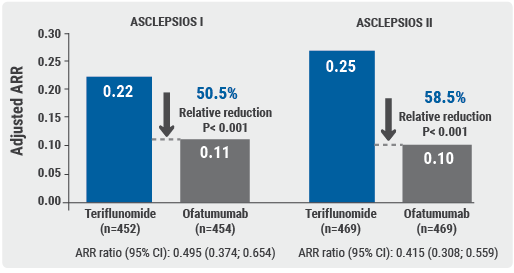Although different scoring systems have been used in the assessment of response in the short-term, little data exists regarding the long-term predictive power of these scores [2,3]. There is evidence that MRI activity, relapses, and EDSS worsening are good predictors of short-term treatment response, i.e. during the first 2-3 years after initiation of therapy [4]. Based on these clinical and imaging parameters, several scoring systems have been developed. Dr Río and colleagues compared different treatment response scoring systems to assess long-term prognosis in treated relapsing-remitting MS patients (n=319), and to describe diagnostic properties of the different scores.
Prediction model analysis showed that all scoring systems could significantly identify patients with an EDSS of 6 after 10 years of follow-up. Survival analysis showed that patients with a Rio score >1, modified Rio score >0, ROAD score >3, and MAGNIMS score >0 had a significant probability of achieving an EDSS of 6.0. The ROAD score showed the best sensitivity (85%), whereas the modified Rio score showed the best specificity (88%). The Rio score showed the best positive predictive value (42%), and the ROAD score the best negative predictive value (94%). Finally, the Rio score demonstrated the best accuracy (81%) [5].
These data reinforce the concept of early treatment optimisation in order to minimise the risk of long-term disability. Data regarding the role of these sources in patients receiving non-injectable drugs are needed.
- Trojano M, et al. Ann Neurol. 2007;61:300-6.
- Río J, et al. Mult Scler. 2018;24:322-330.
- Gasperini C, et al. Neurology. 2019;92:180-192.
- Río J, et al. Mult Scler. 2009;15:848-53.
- Río J, et al. ECTRIMS 2019, abstract 305.
Posted on
Previous Article
« High need for biomarkers for stage III lung cancer Next Article
Selpercatinib (LOXO-292) shows durable activity in RET fusion-positive lung cancer »
« High need for biomarkers for stage III lung cancer Next Article
Selpercatinib (LOXO-292) shows durable activity in RET fusion-positive lung cancer »
Table of Contents: ECTRIMS 2019
Featured articles
Towards a Comprehensive Assessment of MS Course
Cognitive assessment in MS
Late-breaking: Role for CSF markers in autoimmune astrocytopathies
Targeted therapies for NMOSD in development
Monitoring and Treatment of Progressive MS
Challenges in diagnosing and treating progressive MS
Risk factors for conversion to secondary progressive MS
Transplantation of autologous mesenchymal stem cells
Sustained reduction in disability progression with ocrelizumab
Late-breaking: Myelin-peptide coupled red blood cells
Optimising Long-Term Benefit of MS Treatment
Induction therapy over treatment escalation
Treatment escalation over induction therapy
Influence of age on disease progression
Exposure to DMTs reduces disability progression
Predicting long-term sustained disability progression
Treatment response scoring systems to assess long term prognosis
Safety Assessment in the Post-Approval Phase
Use of clinical registries in phase 4 of DMT
Genes, environment, and safety monitoring in using registries
Risk of hypogammaglobulinemia and rituximab
Determinants of outcomes for natalizumab-associated PML
Serum immunoglobulin levels and risk of serious infections
EAN guideline on palliative care
Pregnancy in the Treatment Era
The maternal perspective: when to stop/resume treatment and risks for progression
Foetal/child perspective: risks related to drug exposure and breastfeeding
Patient awareness about family planning represents a major knowledge gap
Late-breaking: Continuation of natalizumab or interruption during pregnancy
Related Articles
September 10, 2020
MRI-based clustering of MS patients

November 8, 2019
Late-breaking: Ofatumumab versus teriflunomide in relapsing MS
© 2024 Medicom Medical Publishers. All rights reserved. Terms and Conditions | Privacy Policy
HEAD OFFICE
Laarderhoogtweg 25
1101 EB Amsterdam
The Netherlands
T: +31 85 4012 560
E: publishers@medicom-publishers.com

